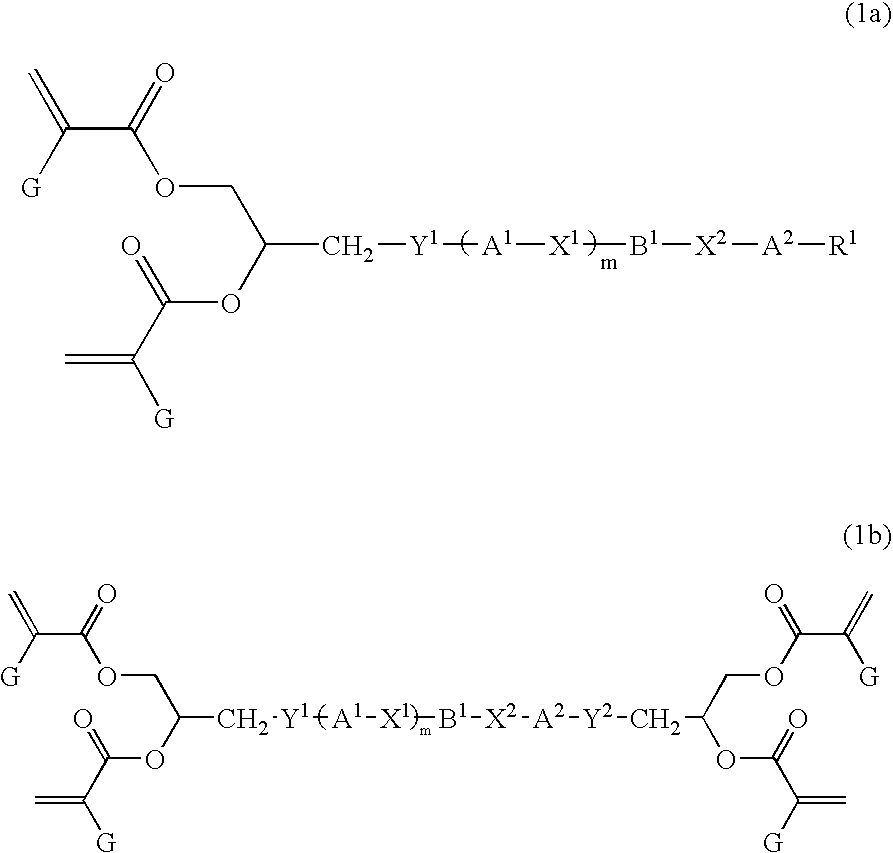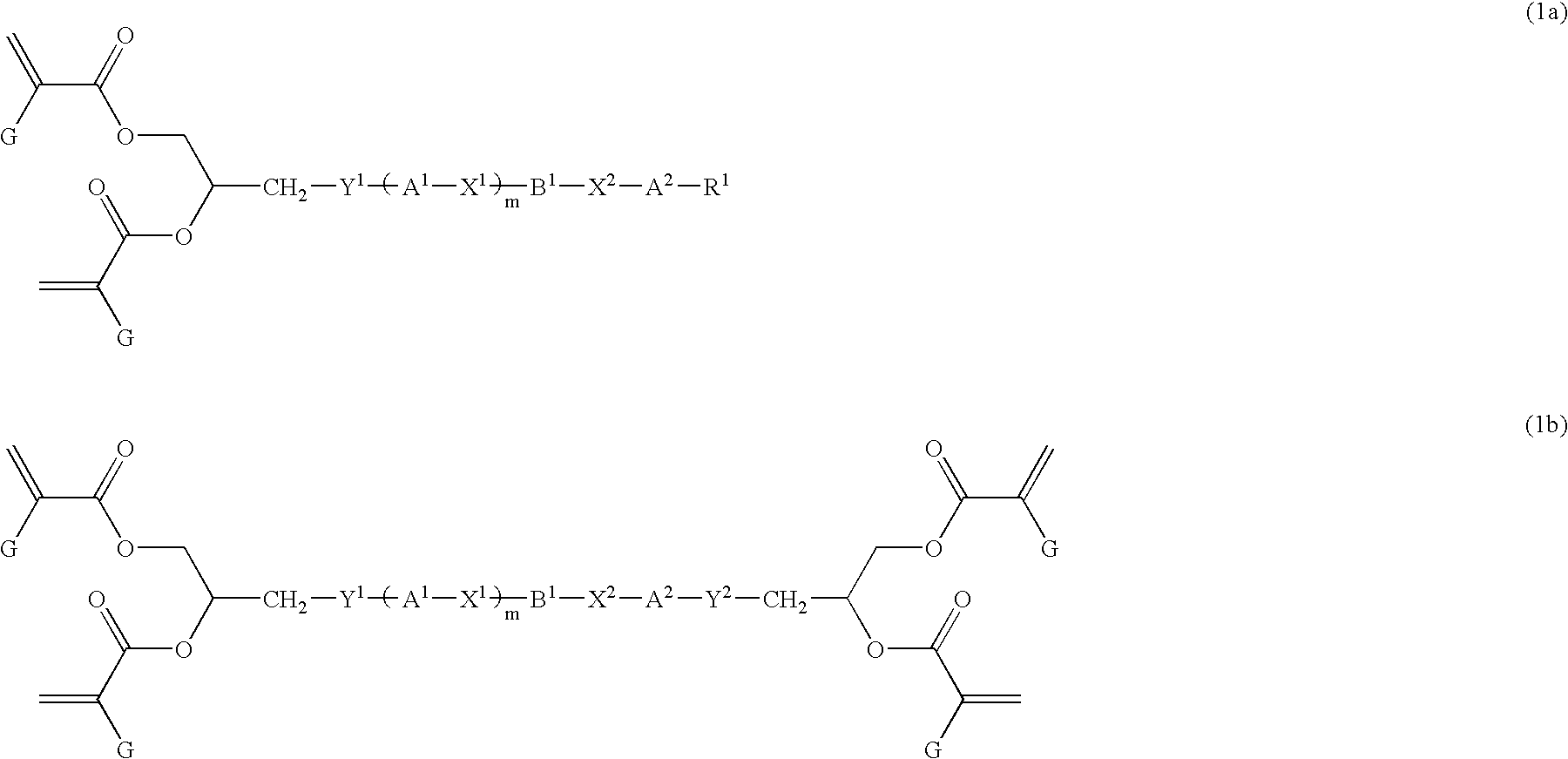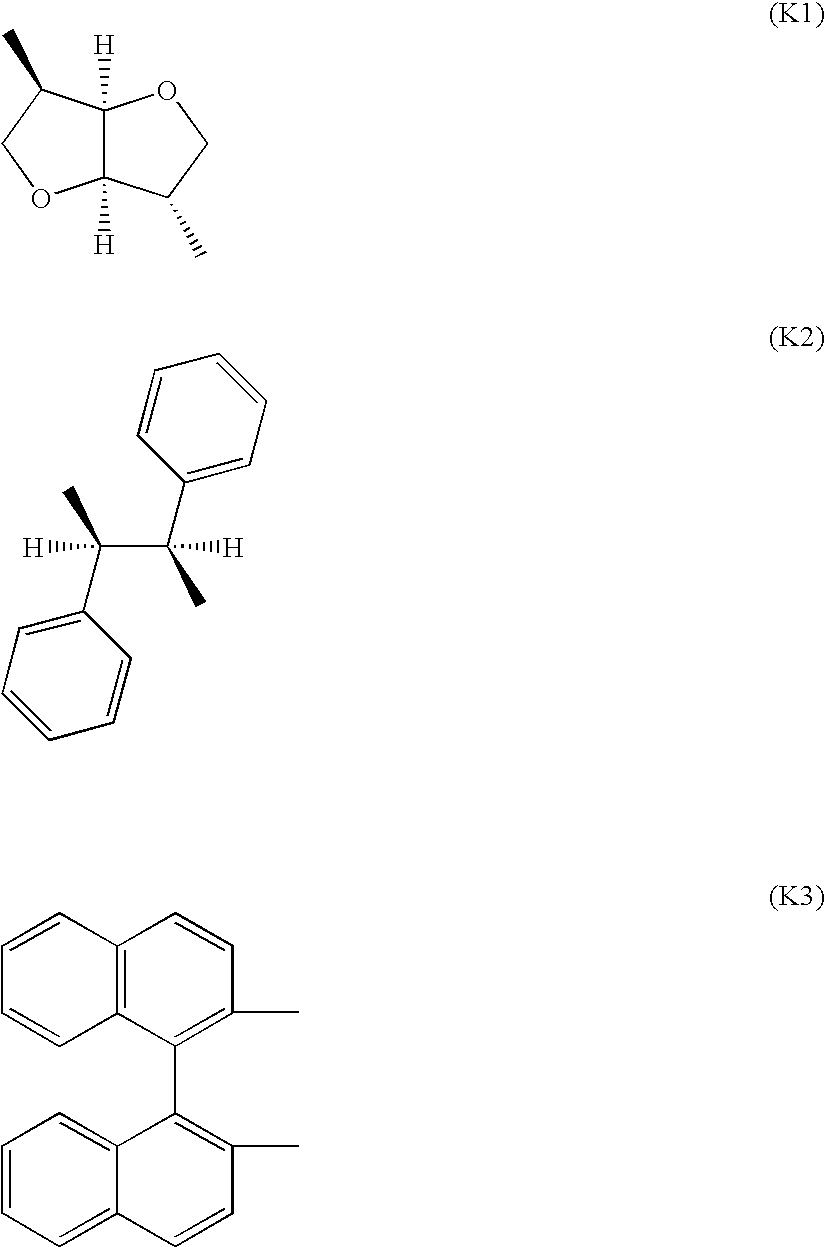Liquid crystal polyfunctional acrylate derivative and polymer thereof
a technology of acrylate derivative and liquid crystal compound, which is applied in the field of liquid crystal compound, can solve the problems that the polymer thereof may not always have the appropriate heat resistance, mechanical strength and chemical resistan
- Summary
- Abstract
- Description
- Claims
- Application Information
AI Technical Summary
Benefits of technology
Problems solved by technology
Method used
Image
Examples
example 1
Synthesis of Compound No. 1
(First Step)
[0113] A reaction mixture obtained by adding 20 g of 4-cyano-4′-hydroxybiphenyl, 20 g of ally bromide and 25 g of potassium carbonate to 250 mL of butanone was refluxed for 7 hours. Water was added to the reaction mixture, which was then separated. An organic layer was washed with water and dried over anhydrous magnesium sulfate. The solvent was distilled off to obtain a residue, which was purified by silica gel column chromatography using toluene as an elusion solvent and then subjected to recrystallization from ethanol to obtain 22 g of 4-allyloxy-4′-cyanobiphenyl.
[0114] 4-(4-Allyloxybutyloxy)-4′-cyanobiphenyl was synthesized in the similar manner as in the first step of Example 1. The phase transition temperatures of the two compounds thus synthesized are shown below.
(Second Step)
[0115] 20 g of m-chlorobenzoic acid was added to a reaction mixture obtained by dissolving 19 g of 4-allyloxy-4′-cyanobiphenyl in 150 mL of methylene chlor...
example 2
(First Step)
[0119] A reaction mixture containing 14 g of allyl(4-chlorobutyl) ether, 14 g of 4-hydroxybenzoic acid, 14 g of potassium carbonate and 50 mL of dimethylformamide was stirred at 90° C. for 3 hours. Water was added to the reaction mixture, which was then extracted with toluene. The toluene layer was well washed with water, and then toluene was distilled off. 20 g of sodium hydroxide, 50 mL of water and 200 mL of ethanol were added to the resulting residue, followed by refluxing for 2 hours. Ethanol was distilled off, and hydrochloric acid was added to make the reaction mixture acidic. The mixture was extracted with diethyl ether and dried over anhydrous magnesium sulfate. A residue obtained by distilling the solvent was recrystallized from a mixed solvent of ethanol and water to obtain 29 g of 4-(4-allyloxybutyloxy)benzoic acid.
Phase transition temperature: C 94 N 107 I.
[0120] The following benzoic acid derivatives were synthesized in the similar manner as in the fir...
example 3
Example of Composition of Homogeneous Orientation
[0127] A composition (CL1) was prepared with 50% by weight of the compound No. 56 and 50% by weight of the compound (M1-2). The compound (M1-2) was synthesized by the method disclosed in JP-A-2003-238491. The composition had a nematic liquid crystal phase at room temperature and an NI point of 155° C. The compound No. 56 had good compatibility without phase separation. The composition (CL1) maintained a liquid crystal state at room temperature but was not immediately crystallized. The composition (CL1) was coated on a rubbed TAC film, and the coated film exhibited homogeneous orientation.
PUM
| Property | Measurement | Unit |
|---|---|---|
| temperature | aaaaa | aaaaa |
| particle diameter | aaaaa | aaaaa |
| particle diameter | aaaaa | aaaaa |
Abstract
Description
Claims
Application Information
 Login to View More
Login to View More - R&D
- Intellectual Property
- Life Sciences
- Materials
- Tech Scout
- Unparalleled Data Quality
- Higher Quality Content
- 60% Fewer Hallucinations
Browse by: Latest US Patents, China's latest patents, Technical Efficacy Thesaurus, Application Domain, Technology Topic, Popular Technical Reports.
© 2025 PatSnap. All rights reserved.Legal|Privacy policy|Modern Slavery Act Transparency Statement|Sitemap|About US| Contact US: help@patsnap.com



